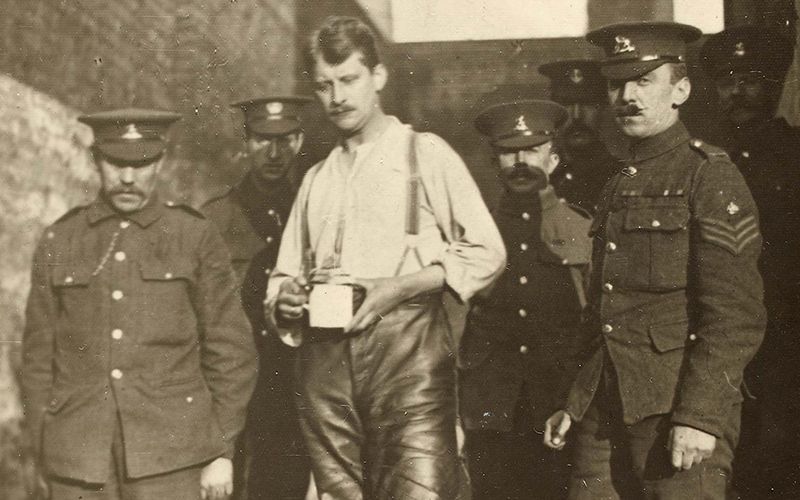Lady Augusta Gregory played an outsized role in the Irish literary revival but her efforts were sidelined - now The Irish Rep wants to help restore her true stature
In "Lady G, Plays And Whisperings of Lady Gregory," now playing at the Irish Rep, producing director Ciaran O'Reilly re-introduces us to the criminally under-appreciated Irish writer, folklorist, playwright, producer, and activist in a show that reminds us just how central she is to the Irish literary renaissance and to modern Irish drama.
Read More: Ruth Negga triumphs in Irish production of Hamlet
Gregory, who died in 1932 at the age of 80, helped nurture the talents of W.B. Yeats, John M. Synge, Sean O’Casey and many others who later became giants on the world stage. She was also the co-founder of the Abbey Theatre, Ireland's national theatre, and its director and chief organizer during its early and often troubled days.
So how was she so sidelined after a career so accomplished? The answer, the show reminds us, is that she didn't fit the narrative of the new republic. Born into the Anglo Irish class in its heyday, she turned against it, embracing an Irish cultural nationalism that shaped the course of her life and works.
Toward the end of the 19th century, a small but impassioned group of the sons and daughters of the landed Anglo Irish gentry had embraced what their ancestors had pointedly derided, the Irish language, Irish folklore, Irish mythology, Irish history and ultimately Ireland itself.
Read More: Examining Eugene O'Neill's Irish American boyhood at First Irish Festival
It was a remarkable turning point that helped change the whole dynamic in the country. Where Lady Gregory's contemporaries like Yeats and Synge saw a people who were Greek in their connection to time, fate and the elements, writers like Joyce and O'Casey saw people brought low by systemic oppression and poverty.
Taken all together however they saw the nation in full, and their efforts electrified the culture and politics of the era, with well-known results.
Lady Gregory played an outsized role in this national awakening but her efforts were sidelined over the decades because of her Anglo Irish background, her challenge to the new and increasingly theocratic republic and her sex, frankly.
O'Reilly has decided to give her achievements their due in her own words and in in her own works. Doing so implies a new maturity in what an Irish person is and has been, expanding our understanding and reminding us how open ended that identity can be.
Two of Gregory's plays are included in the show, which runs to about two hours fifteen minutes with an intermission. The first play is Workhouse Ward, which has the classically Irish and Beckettian set up of two endlessly warring companions thrown together by poverty, fate, and circumstance.
Played by James Russell and John Keating, both men share a single bed in a bleak workhouse and pass the time by arguing bitterly with each other in between their bouts of self-pity. They anticipate Beckett's tramps by decades and they remind us of the old Irish expression that it is better to quarrel than be lonesome.
Russell and Keating are pitch-perfect, unloading scalding invective with facility and great invention, whilst remaining bed bound. Terry Donnelly as the visiting sister comes to spring her brother from the lowly confines is persuasive and hilarious until we learn her real objective, to secure an indentured servant to run her late husband's property.
As Lady Gregory actress Una Clancy gives an affecting performance of the woman behind the myth, allowing us to see into her private hopes and dreams, in a portrait that is all the more affecting for remaining true to Gregory's own stoic character.
The presence of Yeats is ubiquitous in the play, as it should be, and actor James Russell reminds us just how rich their combined gift to Ireland is. The copper beech tree on the Coole Park estate is cleverly represented on the stage and it is carved with the names of Coole House was neglected by the new formed Irish state after Gregory's death in 1932 and it quickly deteriorated.
By the 1960's it had been allowed to fall into a ruin, a neglect that deplored by actor and director Micheal Mac Liammoir in 1964. This month both the tree at Coole Park and Gregory's legacy are given their due by the Irish Rep in a tribute that is as thorough as it is memorable.
Read More: London Assurance is a Christmas cracker at the Irish Rep




Comments